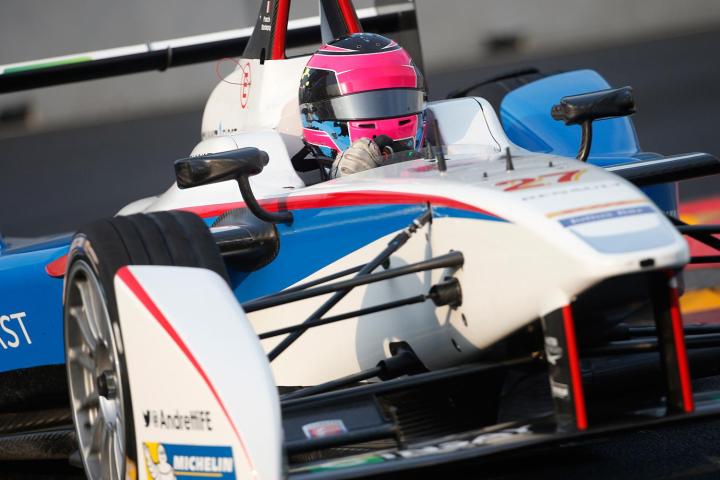The brand new Formula E racing series kicked off in Beijing last weekend in true motorsport fashion with an electrifying final lap that ended in a big crash. While Formula E may end up being an exciting and worthwhile racing series on its own merits, the reason to pay attention is the “electrifying” part.
If the all-electric racing series ends up having a tenth of the impact that its big brother Formula One has, it could profoundly alter consumer cars, not to mention dramatically improve them.
What is Formula E?
The series was started with two important goals: to make electric cars cool and to make Bernie Ecclestone, the necromancer who runs F1, a lot of money. Seriously, the travesty that is NFL’s Roger Goodell still makes Ecclestone look competent and compassionate.
Even with 800 pounds of top-rated batteries, the cars are still limited to about 25 minutes of full-throttle racing time.
For now, all of the teams operate the same Spark-Renault SRT_01E race car. That might sound like a French laser printer, but it is actually a 1957-pound racer that produces up to 270 horsepower, capable of making the sprint to 60 in just under 3.0 seconds. A big chunk of the weight is, as one might expect, the battery pack, which tips the scales at around 800 pounds.
These batteries use the same lithium-ion technology as other high-end EVs on the road today. As a result, racers suffer some of the same issues as consumer electric cars. Even with 800 pounds of top-rated batteries, the cars are still limited to about 25 minutes of full-throttle racing time. Accordingly, each team operates two cars and drivers have to switch between them mid-race.
Why does Formula E matter?
It isn’t just racing aficionados that should pay attention to Formula E. Leonardo DiCaprio is one of the team owners. He believes that this new-found racing series is important to the future of consumer EVs. The idea isn’t a crazy one either.
Racing has a history of developing technical solutions to problems faced by consumers. Early aerodynamic work done in NASCAR didn’t just help cars like the Dodge Charger exceed 200 mph in racing, it literally helped change the shape of American cars. More recently, Formula One has pioneered advanced hybrid systems, double-clutch gearboxes, and spurred the development of advanced, lightweight composite materials.
While real technical advancement may have to wait until racing teams are fielding their own cars, there is clear space for exactly the sort of technical improvements that may be most relevant to consumers. Formula E racers spend a lot of their time managing the power settings of their cars. Unlike consumer electric cars, this is a complex prospect, requiring the drivers to manage both drive settings and gearing – all while racing full-tilt.
Current electric vehicles typically lack traditional gearboxes because the high, flat torque curve of an electric motor makes them unnecessary. However, gearing still helps get more out of any motor, especially when, as in Formula E, power output varies. Developing electric motors and gearboxes in tandem could help eek out more performance and range from road-going EVs.
Formula E may or may not be a success, but the technology on display is already important.
These are exactly the same concerns that keep EV engineers up nights. So the injection of more money, and the insanely competitive environment of racing, may well jump start development, particularly by developing technologies that simply wouldn’t be turned into money makers for the likes of the Nissan LEAF.
Conclusion
Formula E may or may not be a success, but the technology on display is already important. Electric car sales are climbing, and there are still many technical questions to address. Motor racing will almost certainly help address some of those.
These cars may also hold some clues about the long run. As cars turn away from fossil fuels, the sort of electric motor racing in Formula E may simply become motorsport in general. In that sense, these early series may also give fans a clue about what the future holds – for the sport and for consumer cars.






